Casa Catedral in Mexico stands for material honesty
The Casa Catedral by the Laboratorio de Arquitectura experiments with material honesty to create a distinct modular form with grid-like interventions in Santiago de Querétaro. The Mexican Studio has a number of concrete Blocks with multiple functions and appearances designed to serve as primary structural elements without cladding to achieve both economic efficiency and a graceful aging process.
The residence The floor plan follows a linear axis consisting of four main volumes and a connecting piece. The volumes, delimited by load-bearing walls and grids, effectively separate public and private areas, ensuring a balanced scale and preserving the privacy of each space. In addition, a careful southeast orientation guarantees panoramic views from every corner of the house and promotes a seamless connection with the surrounding canyon landscape.
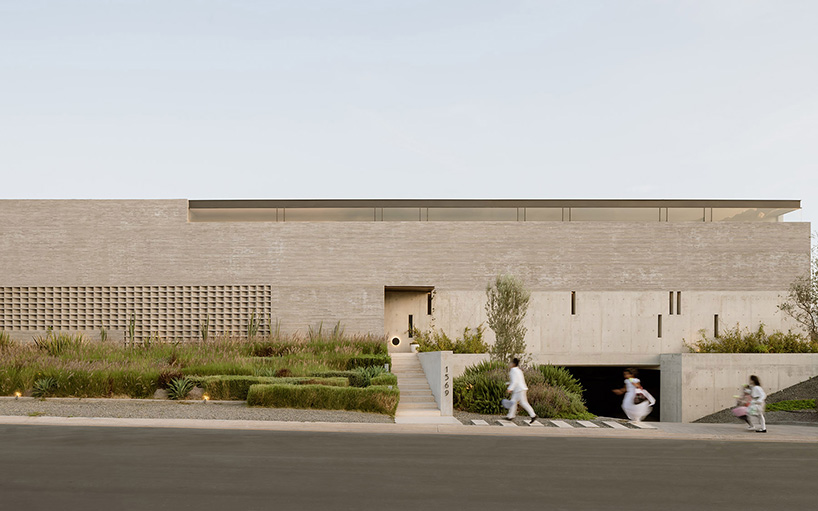
all pictures by Ariadna Polo
Laboratorio de Arquitectura compiles a series of volumes
The interior facade of the house opens onto the garden, while the street-facing facade uses discreet openings and slits to ensure sufficient natural light without compromising privacy. Inside, the connecting volume serves as a central hub, housing the main entrance and staircase in a double-height space that warmly welcomes visitors and fluidly integrates different parts of the program. This space stands out as a focal point, using materials such as tinted glass supported by tensioners to reflect the lush vegetation and create a harmonious continuity with the natural environment.
About the larger main volume on the ground floor, The team in Laboratorio de Arquitectura has arranged common spaces such as the sunken living room and dining area to create an open plan layout with expansive views of the garden. On the upper floor are the master bedroom and walk-in closet, which open onto a green area that provides more privacy.

Casa Catedral by Laboratorio de Arquitectura experiments with material honesty
formed by structural block walls and grids
The remaining three volumes are divided horizontally by green spaces, creating privacy and eliminating the need for shared walls. On the ground floor, Laboratorio de Arquitectura has accommodated a study, guest rooms and a gym, while upstairs there are additional bedrooms connected by a double-height corridor that ends in a lattice. This design creates the illusion of floating ceilings and provides abundant natural light. In addition to controlling scale and protecting privacy, the strategic placement of structural block walls and lattices also addresses the need to mitigate solar gain and maintain privacy. This improves the quality of life indoors while minimizing reliance on alternative ventilation systems, resulting in significant energy savings.
A key innovation in Casa Catedral’s distinctive block design was the integration of a tongue and groove system to minimize vertical joints. With precise dimensions including 15 centimeters wide, 30 centimeters long and 4 centimeters high, the blocks were designed to complete the module at 5 centimeters, resulting in a pleasing aesthetic. The voids within them allow for the seamless integration of electrical, plumbing and hydraulic systems, further enhancing the efficiency and practicality of the design.
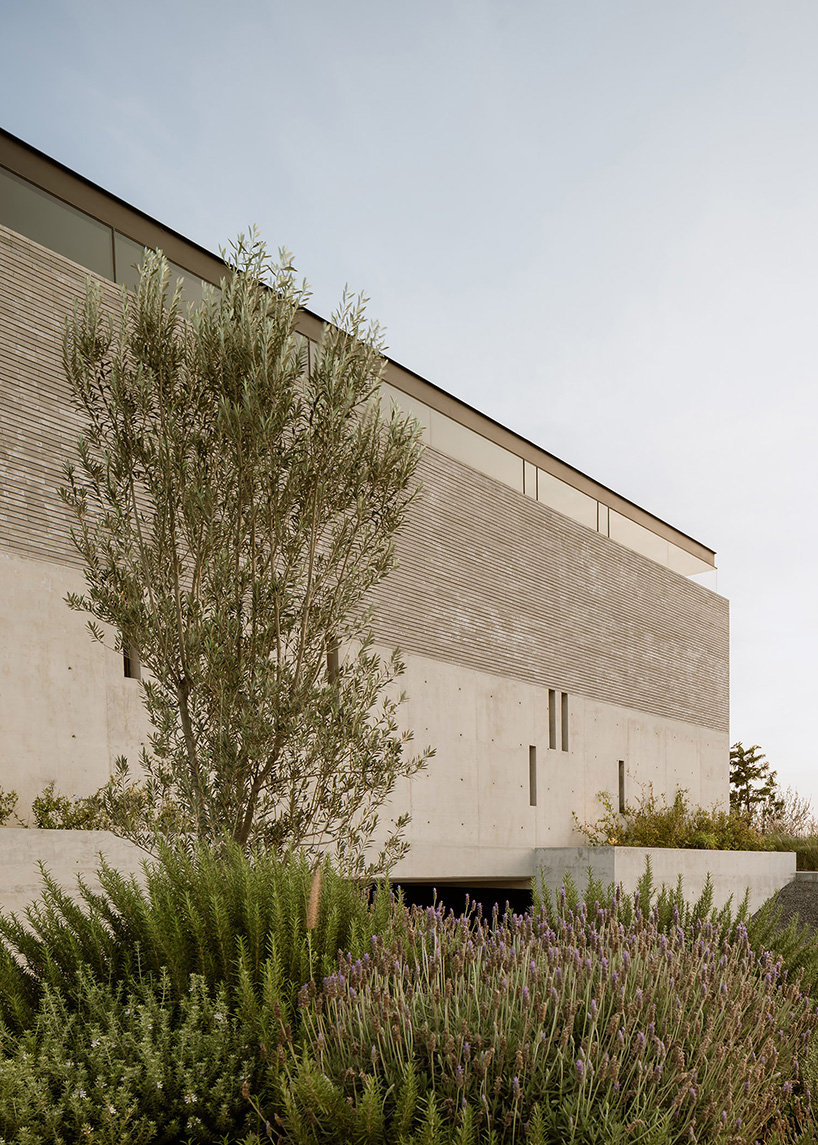
a series of concrete blocks give a special aesthetic finish
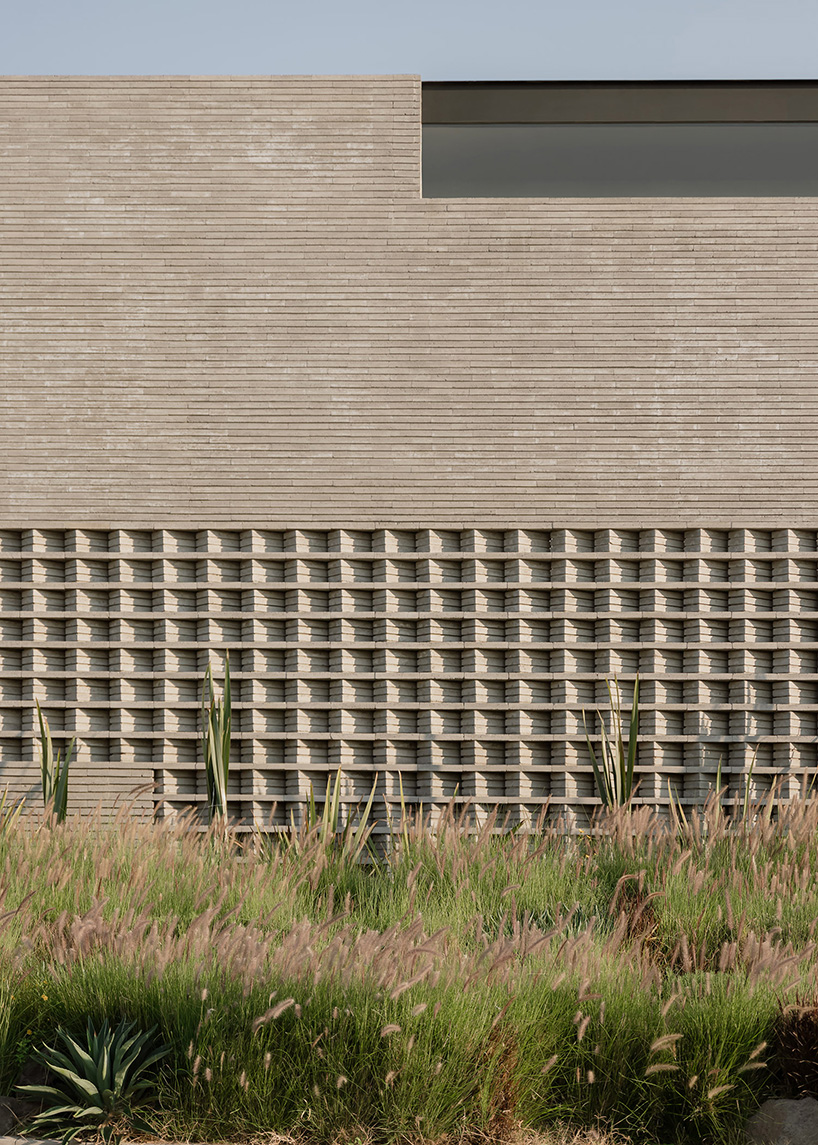
The blocks were designed to serve as primary structural elements and do not require cladding.
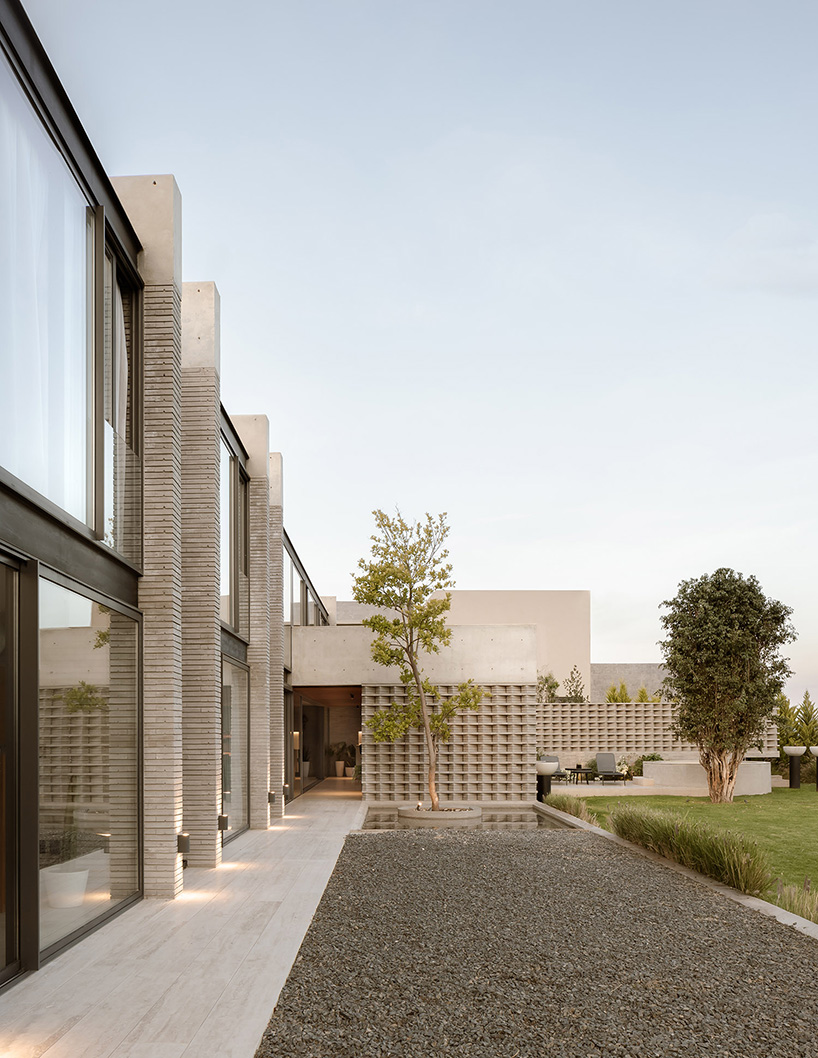
The floor plan of the residence follows a linear axis and consists of four main volumes and a connecting piece
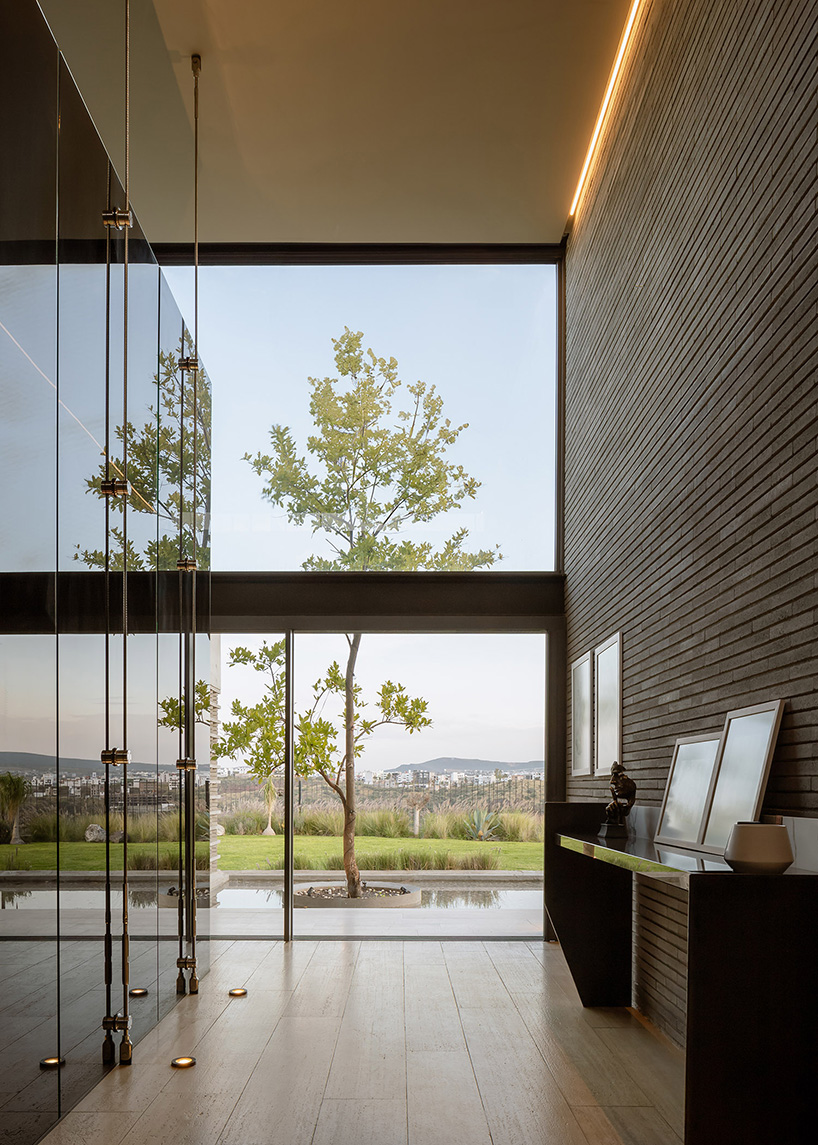
The connector volume serves as a central hub
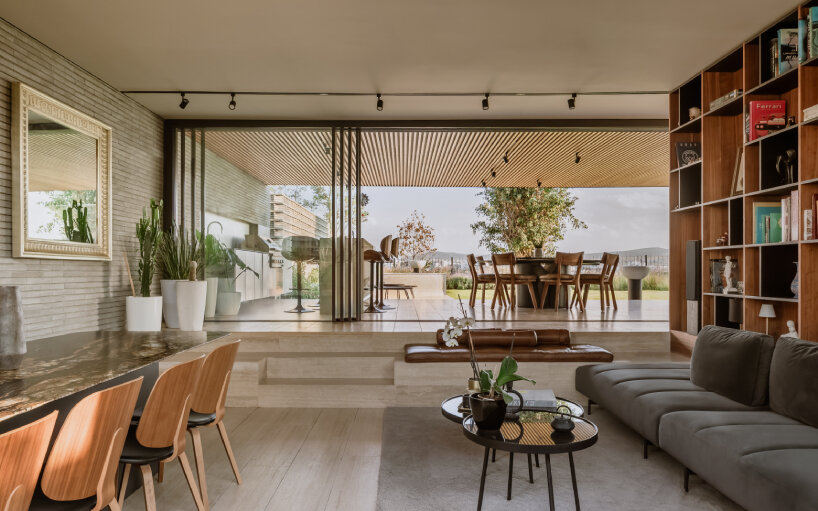
Common spaces such as the sunken living room and dining area are connected to the terrace and kitchen to create an open layout

